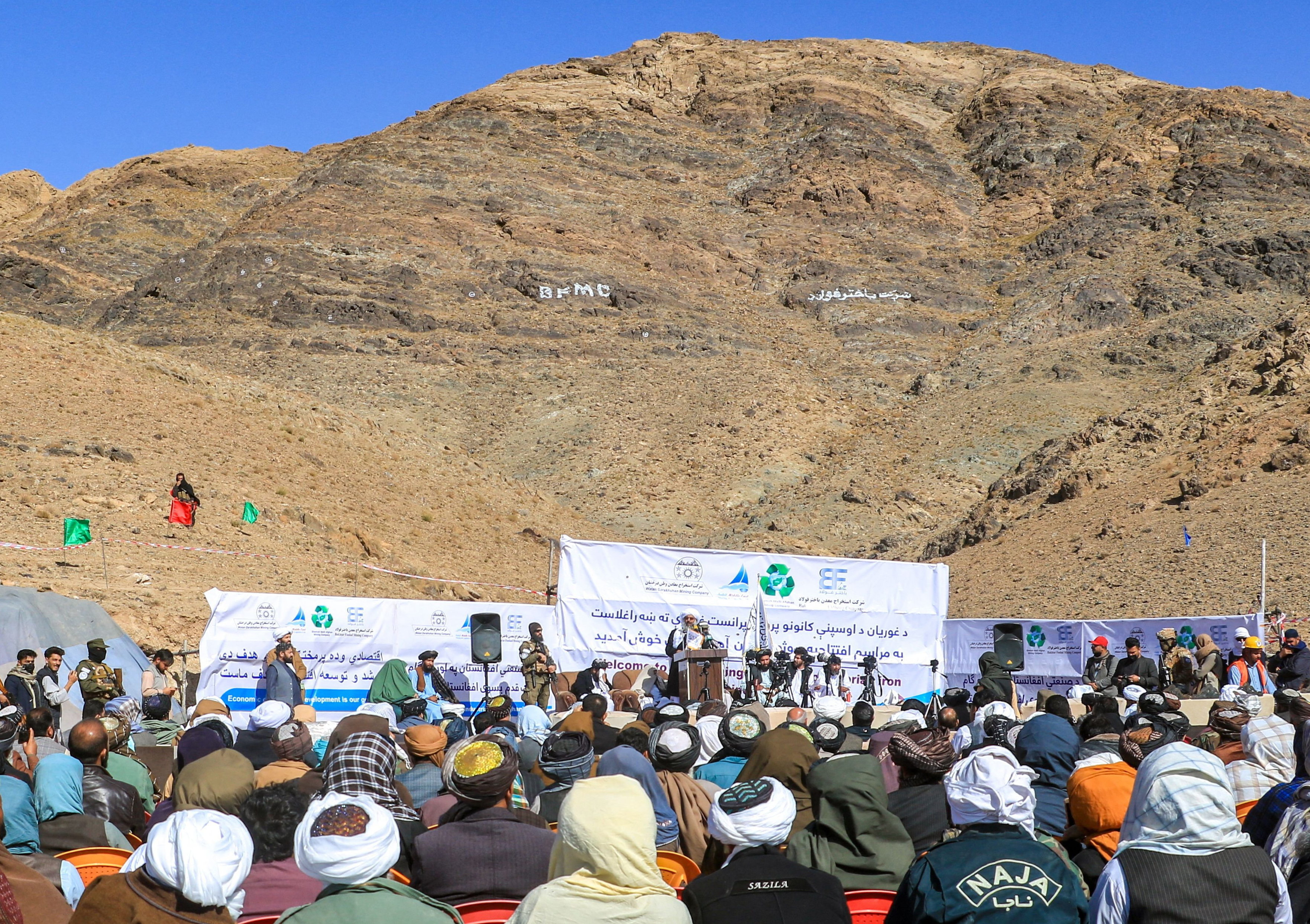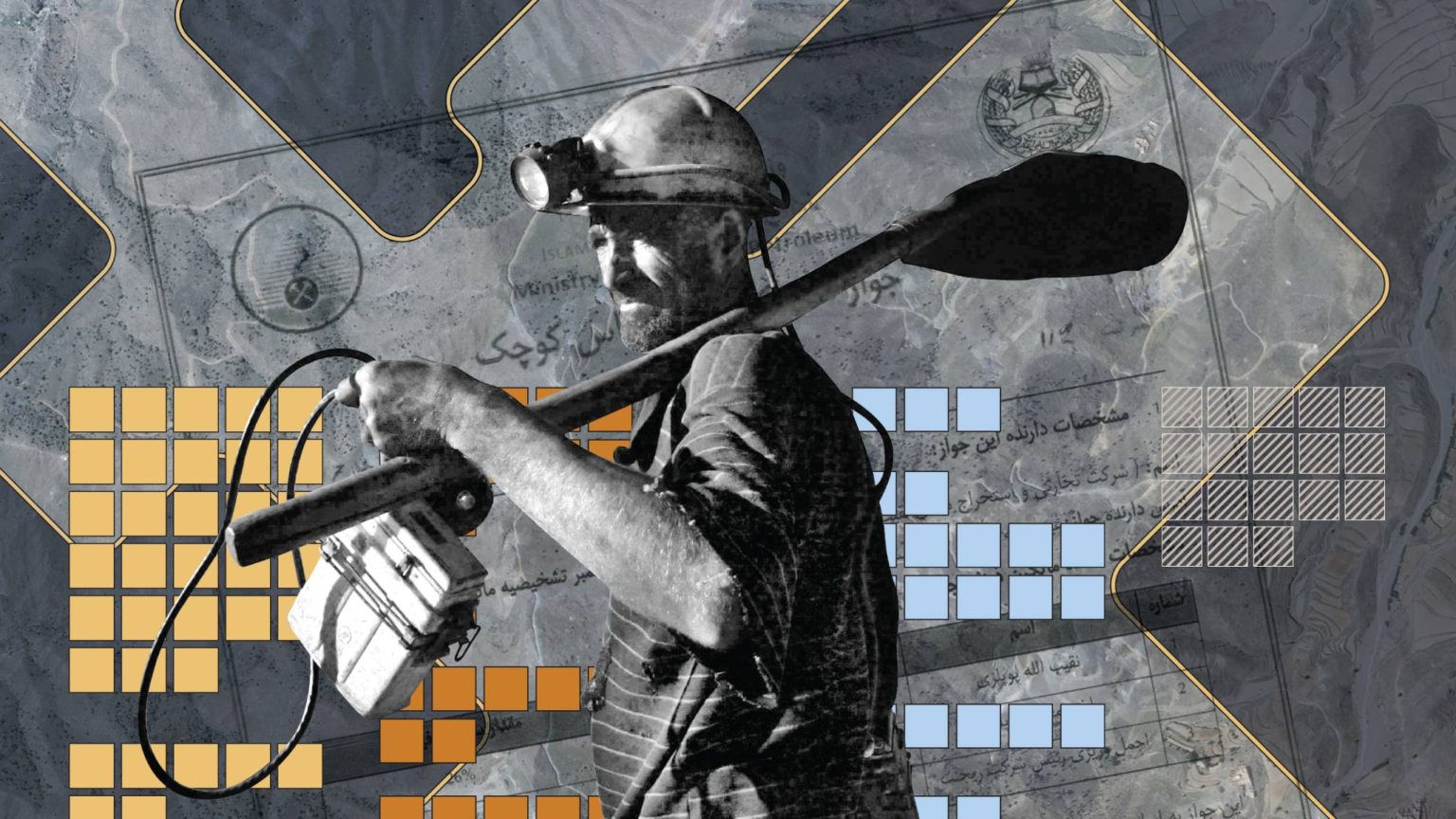Satellite imagery of the site shows rapid changes including tracks for diggers and exploratory holes that Richard Brittan, managing director of geospatial company Alcis, said were indicative of mining company work rather than artisanal mining. The company has advertised online for everything from engineers to translators, according to CIR.
The work indicates that, while likely early in the exploration phase, it has the potential to become a significant mine, according to Chambers. “When you start seeing drill pads at that density then you know that they’re getting pretty serious,” he said.
The Taliban are banking on China to ease their isolation, with Beijing last year saying it would expand its Belt and Road Initiative into Afghanistan and sending an ambassador to the country.
Afghanistan is “an important partner”, China’s Ministry of Foreign Affairs told the FT. “China encourages Chinese companies to invest and start businesses in Afghanistan . . . [and] supports Afghanistan in making full use of its natural endowment of rich mineral resources.”
“The big question is, is the Chinese push real or not?” said Graeme Smith, a senior consultant at Crisis Group. But he added that China appeared to be “thinking about long-term supplies”.
The Taliban have also auctioned the Ghoryan iron ore deposit, a vast trove of metal bordering Iran, to Afghan, Turkish and Iranian companies, though satellite imagery shows little evidence of development yet.

Many analysts are sceptical that the Taliban has the competence to oversee an internationally competitive mining sector. The group surprised observers last year by announcing that a British company called GBM was among those involved in the Ghoryan iron ore development.
But when contacted by the FT, Michael Short, founder of UK-based GBM Ltd, said he had never heard of the project. He had tried to mine a separate site under the previous government but pulled out before the Taliban’s takeover. “We gave up in the end,” he said.
International miners looking to Afghanistan face a list of challenges that would put off all but the most determined company, from war-ravaged infrastructure to the spectre of US sanctions. Though the US Treasury announced an exemption to shield commercial transactions, analysts say few banks would risk dealing with the regime.
One international official said that while companies from China and elsewhere were eager to secure long-term mining rights in Afghanistan, they appeared reluctant to start pouring money into the country yet.
Afghanistan’s mines were “interesting enough for people to put in money to hedge on contract licences”, the official said. “But in terms of actually putting boots on the ground, and machinery on the ground . . . the legal framework, the political framework, the potential of falling foul of sanctions all makes it very high risk.”
The country’s new prospectors are undaunted. Ahmadzai, the gemstone miner, said he recently received a sample of higher-quality nephrite from the country’s remote north-east, and was hoping to expand. “If Afghanistan’s mines are not extracted now,” he asked, “when?”
